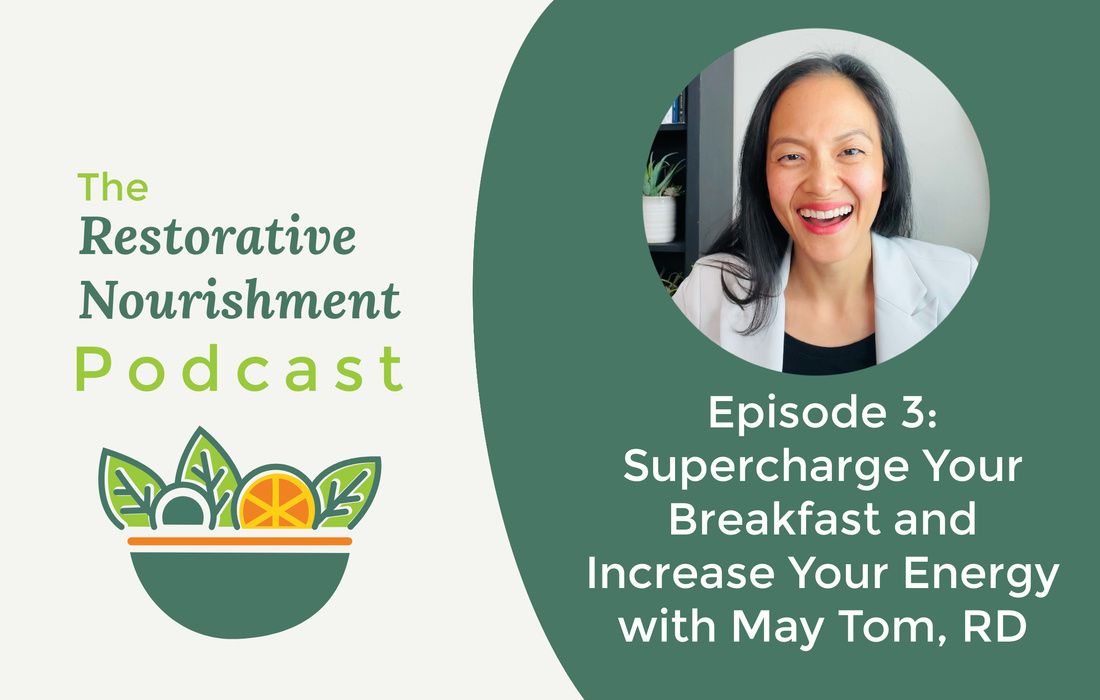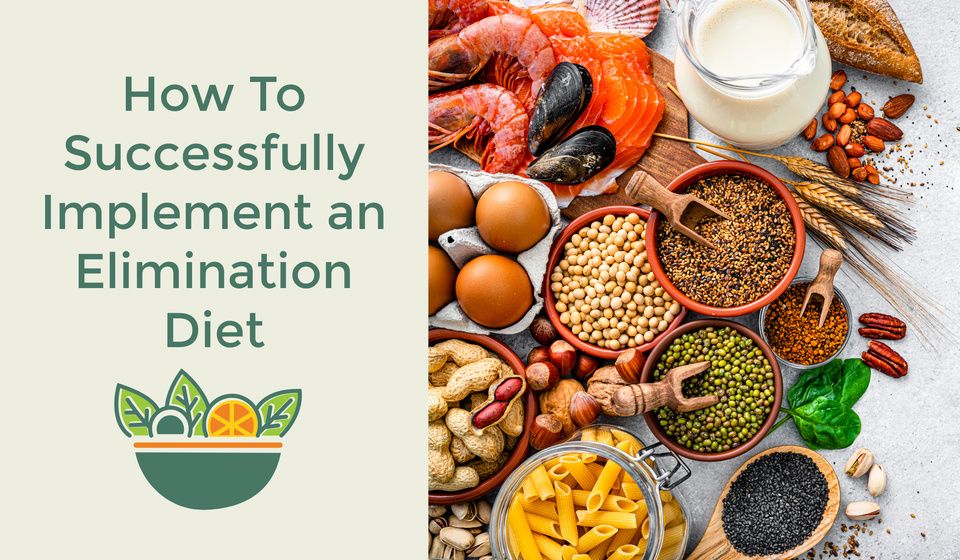Episode 3: Supercharge Your Breakfast and Increase Your Energy Levels with May Tom, RD

In Episode 3 of the Restorative Nourishment Podcast I am speaking with May Tom, RD. May is a registered dietitian with an extensive training in functional medicine and is a certified Functional Medicine practitioner. May received her undergraduate degree in physiology and neuroscience from the University of California San Diego. She received her master's in public health from Loma Linda University along with her dietetics license. May is passionate about optimizing patient outcomes through discovery, education, and behavior modification. In this episode, we're talking about how to upgrade your metabolism and increase your energy with a supercharged breakfast so you can function your best and live your life's purpose.
Are we starting off the day fueling properly? If you didn't sleep well and if you're under a lot of stress, it's easier to make poor dietary choices. Most people gravitate toward a carbohydrate-heavy breakfast after a night of not sleeping or during periods of high stress because carbohydrates reduce cortisol and also raise serotonin. It's a little bit of a self-medicating thing that we just gravitate towards when we're stressed or under slept.
How can we balance cortisol, blood sugar, and our circadian rhythms? We do this by consuming a high-protein, high-fiber breakfast with a good amount of healthy fats. A breakfast like this consumed at the appropriate time can be considered a zeitgeber, or "time-giver" to help entrain your body's circadian rhythm and balance cortisol levels.
In this podcast episode, learn the best timeframe to consume breakfast after waking, what the best ratio of macros is for sustained energy throughout the day, and different nutrient-dense breakfast options to include in your weekly meal planning.
Watch or listen to Episode 3:
Consuming a high-protein breakfast with at least 25 to 30 grams of protein, at least 10 grams of fiber, and around 30 grams of fat will help stabilize blood sugar throughout the day, keeping you focused, energized, and greatly reduce food cravings for sugar and refined carbs.
Breakfast Ideas from our Meal Planner Mentioned in the Podcast:
Cottage Cheese, Egg, and Avocado Breakfast Bowls (note: 1 cup of cottage cheese contains 28 grams of protein)
Black Rice, Turkey, and Cabbage Breakfast Hash
More Links:
May's Breakfast Video on YouTube
May's High-Protein Recipe List from Nourishing Meals®
Learn more about becoming a Nourishing Meals® member to get access to all of our nutrient-dense breakfast recipes and meal planning tools!

About the Author
Alissa Segersten, MS, CN
Alissa Segersten, MS, CN, is the founder of Nourishing Meals®, an online meal-planning membership with over 1,800 nourishing recipes and tools to support dietary change and better health. As a functional nutritionist, professional recipe developer, and author of The Whole Life Nutrition Cookbook, Nourishing Meals, and co-author of The Elimination Diet, she helps people overcome health challenges through food. A mother of five, Alissa understands the importance of creating nutrient-dense meals for the whole family. Rooted in science and deep nourishment, her work makes healthy eating accessible, empowering thousands to transform their well-being through food.Nourishing Meals Newsletter
Email updates.






Add Comment
Comments
Excellent content and…
Excellent content and
takeaways in abundance!
Thank you ladies.
Heather
(Supercharge your breakfast)
Thank you, Heather! Glad you…
Thank you, Heather! Glad you enjoyed it! :)